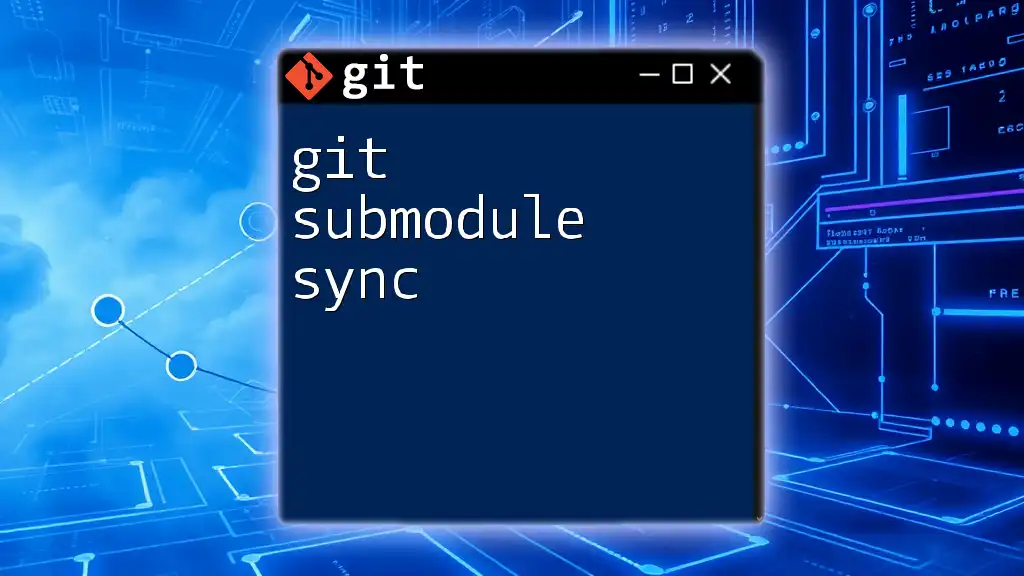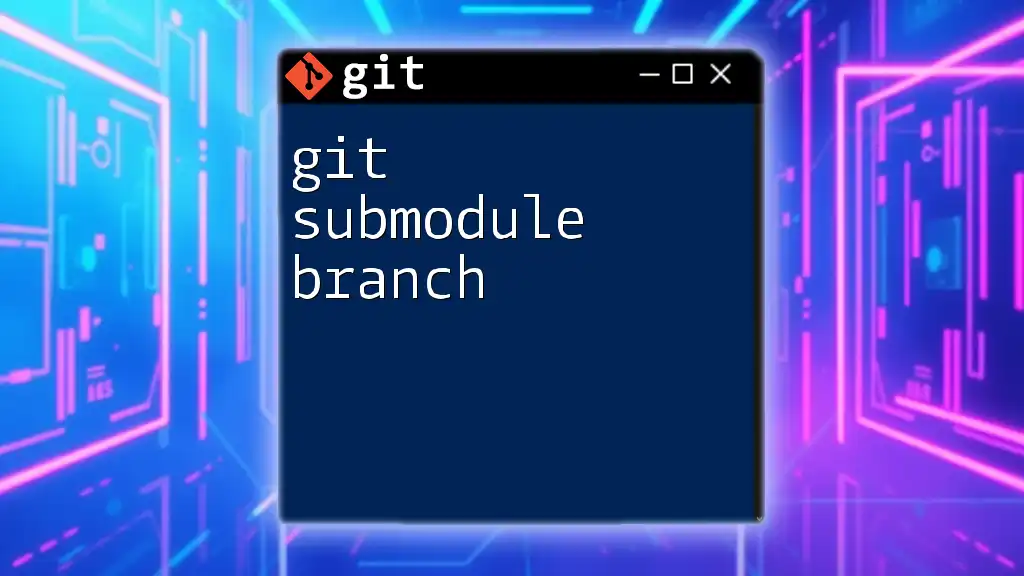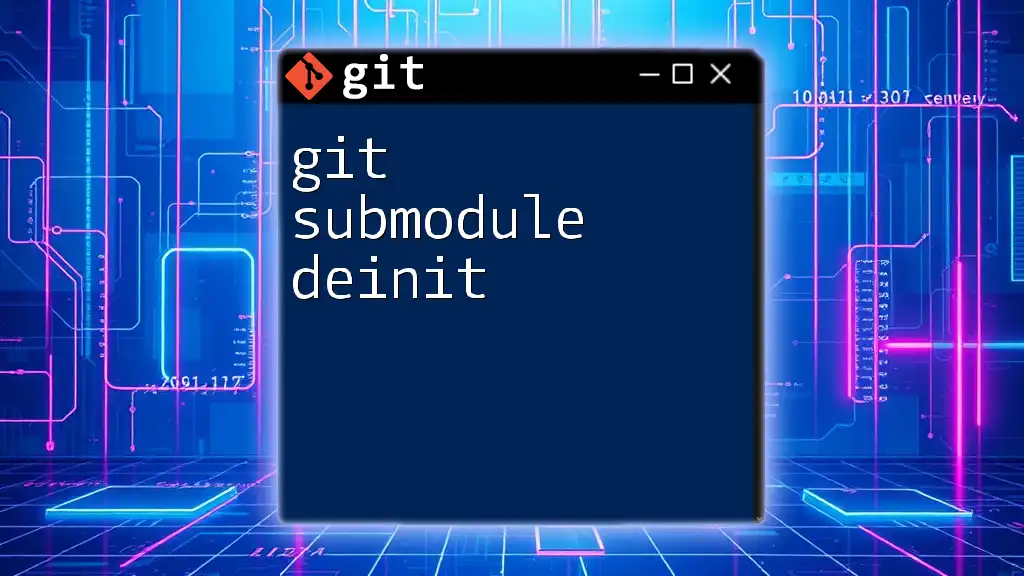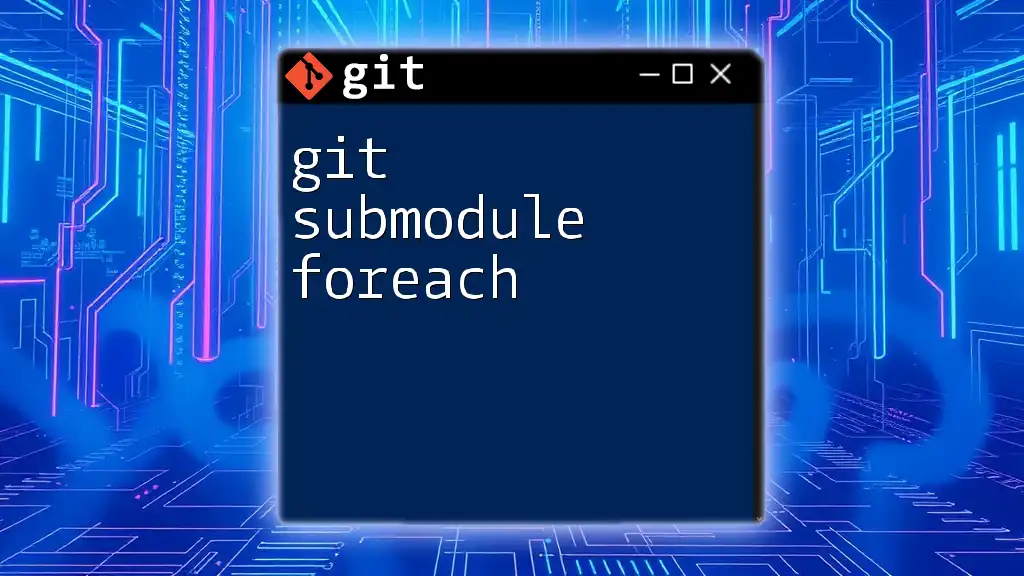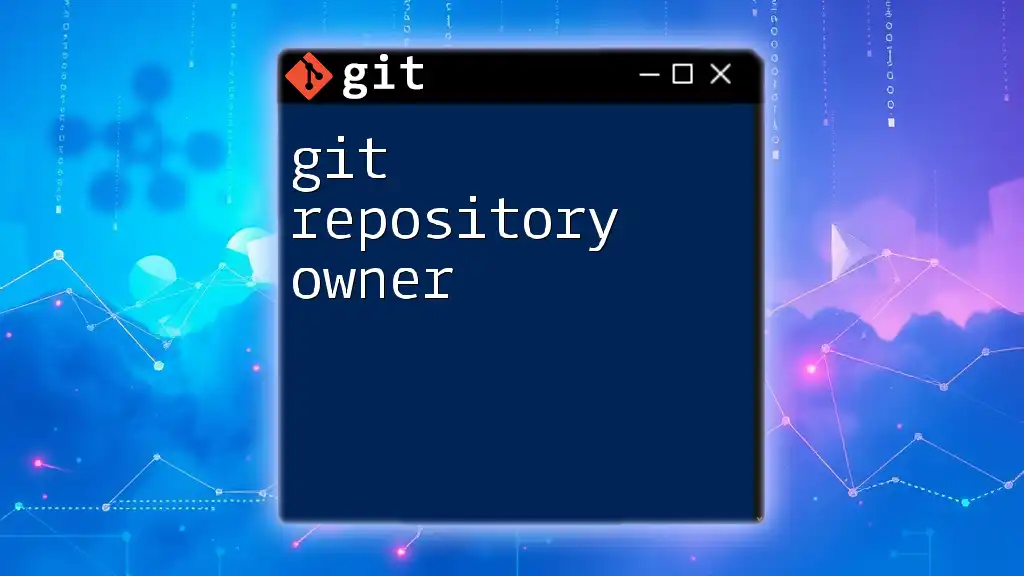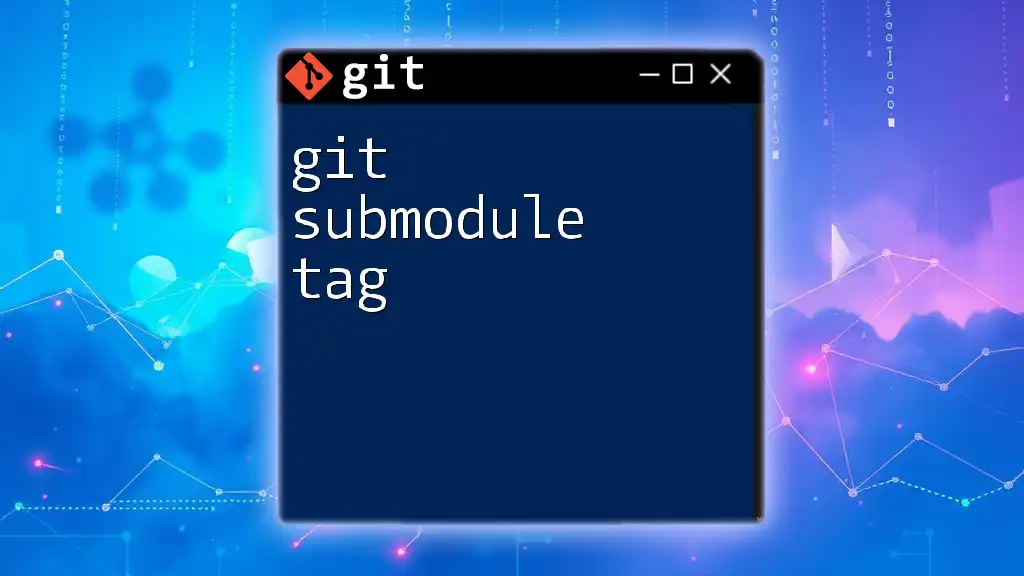Git subrepo is a tool that allows you to manage and maintain a repository as a subdirectory of another repository, enabling a seamless workflow for incorporating external projects.
Here's a basic command to add a subrepository:
git subrepo clone <repository-url> <subdirectory>
What is Git Subrepo?
Git subrepo is an extension of Git that allows users to manage subrepositories within a parent repository. Unlike Git submodules, which track a specific commit from another repository, git subrepo provides a more intuitive way to manage multiple repositories as they exist in the directory structure of your project. This makes it particularly useful for projects that require tight integration of dependent repositories.
Purpose of Subrepos
The primary purpose of using git subrepo is to simplify collaboration between repositories. By allowing a project to include and manage other repositories seamlessly, developers can keep their code organized and maintain clean boundaries between various components. This is particularly beneficial in larger projects where you might be dealing with multiple libraries or services.
Comparison with Git Submodules
While both git subrepo and git submodules serve the purpose of including one Git repository inside another, there are significant differences.
- Git Submodules: These link to a specific commit of the external repository. Changes made in the submodule require you to commit changes in the parent repository separately, which can lead to a lot of syncing issues.
- Git Subrepo: It treats the subrepository more like a normal directory. You can pull updates seamlessly and push changes from the subrepo back to the original repository without added complexity.
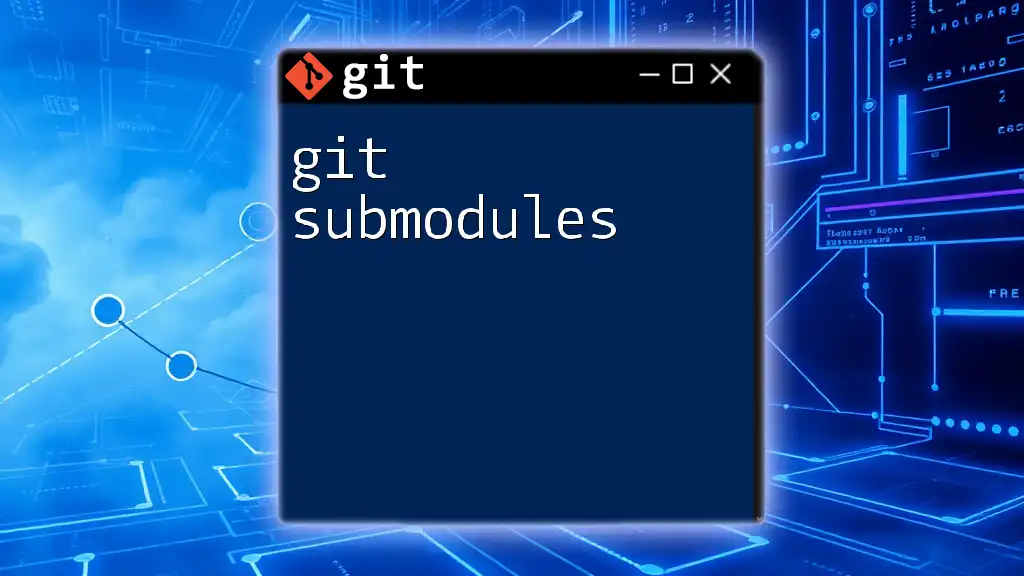
Setting Up Git Subrepo
Pre-requisites
To get started with git subrepo, ensure you have:
- A Git installation on your machine.
- Command-line access to install the git subrepo tool.
Installation
To install git subrepo, you can clone the repository and compile it from source. Here’s how:
git clone https://github.com/ingydotnet/git-subrepo.git
cd git-subrepo
make install
Once installed, you can use git subrepo commands in your terminal.

Basic Git Subrepo Commands
Adding a Subrepo
To add an external repository as a subrepo, use the following command:
git subrepo clone <repository-url> <subdirectory-path>
Explanation
- <repository-url>: The Git URL of the repository you wish to include.
- <subdirectory-path>: This is the path in your main repository where you want to clone the subrepo.
This command pulls in the entire repository into your project, maintaining its full history.
Updating a Subrepo
To update the subrepo with the latest changes from the original repository, use the command:
git subrepo pull <subdirectory-path>
What Happens During This Process
When you execute this command, it fetches the latest changes from the external repository and merges them into the specified subdirectory of your project. This operation ensures that your parent repository stays up-to-date with changes made in the subrepo.
Pushing Changes
If you've made changes within the subrepo and want to push those changes back to the original repository, use:
git subrepo push <subdirectory-path>
Scenarios for This Command
This is particularly beneficial when you make updates in a shared library or contribute changes that need to be reflected in the original source repository. It allows for easier collaboration and minimizes the complexity involved in tracking changes.

Common Use Cases for Git Subrepo
Microservices Architecture
In a microservices architecture, where services often depend on one another, using git subrepo allows teams to manage these dependencies efficiently. Each microservice can operate as its own repository and can be versioned independently while still being part of a larger project.
Shared Libraries
For projects consuming shared libraries, using git subrepo becomes invaluable. It enables developers to maintain these libraries as separate projects while having them accessible within the main codebase. You can easily manage updates to the library without breaking your main project.
Feature Development
Using git subrepo, developers can isolate experimental features in their subrepos. This allows you to work on new functionalities without affecting the stability of the main project until they are fully tested and ready for production.
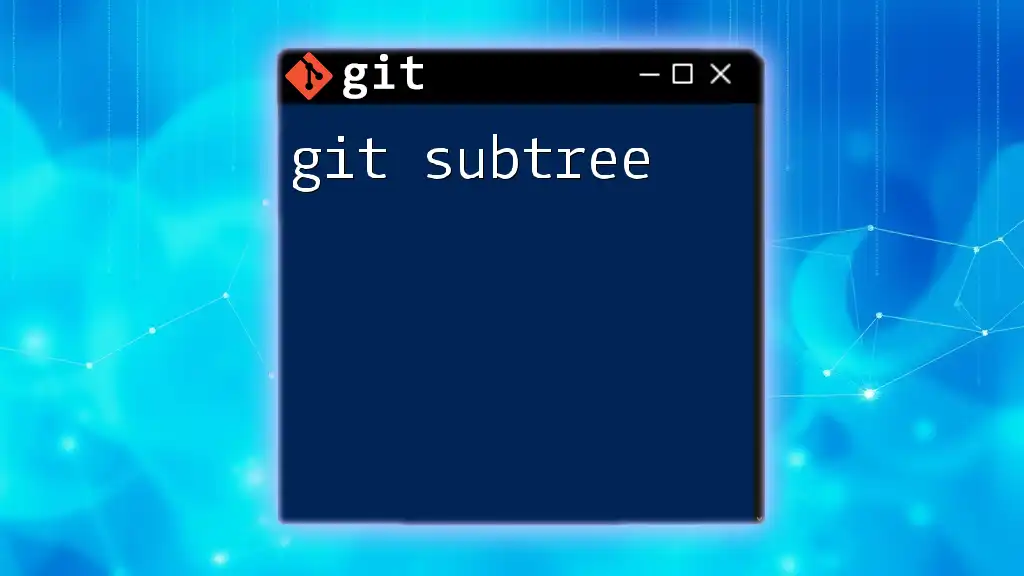
Best Practices for Using Git Subrepo
Organizational Tips
Keep your projects organized with a logical directory structure. Use meaningful names for subrepo directories to clarify their purpose and relationships within the project.
Version Control Strategy
Maintain a clear versioning strategy for your subrepos. Always make sure to update subrepos regularly to benefit from the latest fixes and improvements while testing compatibility with your main codebase.
Collaboration
When collaborating with a team, establish guidelines on how to use git subrepo effectively. Ensure that everyone is aware of how to manage updates, pull requests, and pushes to maintain a smooth workflow.

Troubleshooting Common Issues
Common Errors
Some common errors when using git subrepo might include issues related to permission problems, missing repositories, or outdated references. Here are a few examples:
- Permission Denied: Ensure that the external repository is accessible and that you have the correct permissions to clone or push changes.
- Not a Git Repository: Verify that the provided URL is correct and that you are inside a Git-managed directory.
Debugging Tips
To diagnose problems with subrepos, check the output messages from git commands for clues. Investigate your `.git/subrepo` directory for any lingering errors or issues. Using verbose output can often shed light on underlying issues.

Conclusion
In summary, git subrepo is an efficient way to manage related projects within a single repository without the complications often associated with submodules. By employing git subrepo, you can maintain an organized codebase while streamlining collaboration and feature development. Whether you're managing microservices, shared libraries, or experimental features, embracing git subrepo could enhance your development workflow.
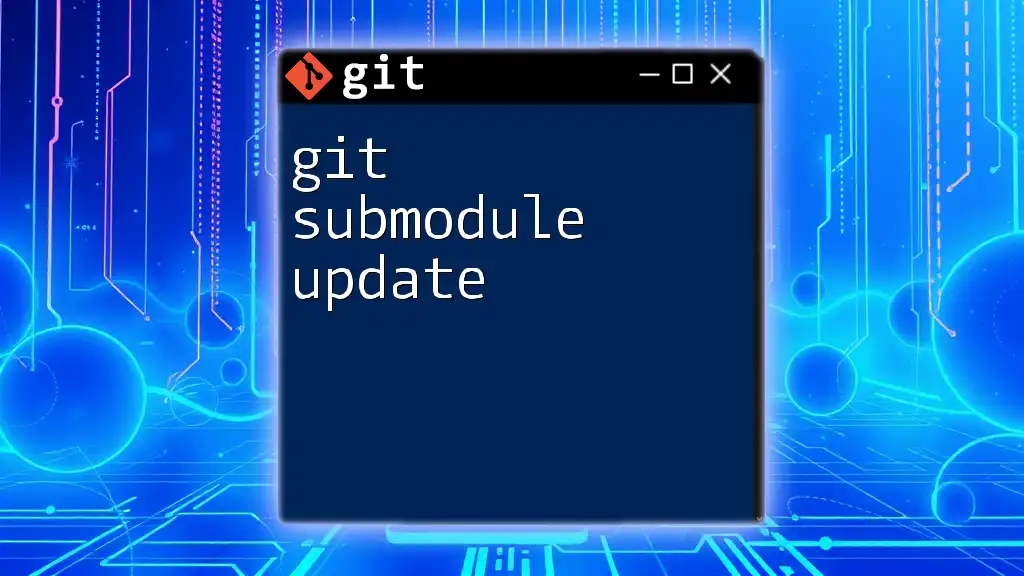
Additional Resources
For those who wish to delve deeper into git subrepo, consider exploring the following:
- Links to Official Documentation: For accurate and updated reference, access the official git subrepo documentation to understand all commands and features thoroughly.
- Online Tutorials and Videos: Engage with visual learning through online tutorials and video guides that walk through practical examples of using git subrepo.
- Other Version Control Best Practices: Familiarize yourself with additional articles on version control concepts, techniques, and best practices to further improve your coding and collaboration skills.







